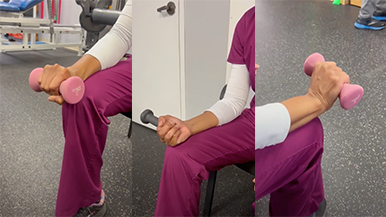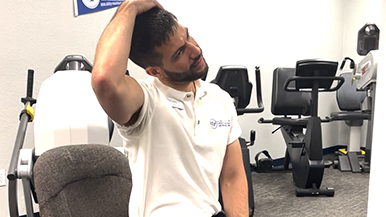 It is critical to practice proper lifting techniques. Whether you’re lifting weight or carrying heavy objects on the job, your form is vital to overall health.
It is critical to practice proper lifting techniques. Whether you’re lifting weight or carrying heavy objects on the job, your form is vital to overall health.
Improper form while lifting can lead to:
- Muscle strains and tears
- Back problems
- Joint pain
These injuries can take weeks or even months to heal properly. Sprains and strains are typically caused by overstretching or tearing ligaments, which often occur from lifting an object improperly. Practicing proper form throughout your lifting exercises leads to better results, prevents injury, allows your muscles to work more effectively, and enhances your overall strength and stability.
You’ve probably heard the expression, “An ounce of prevention is worth a pound of cure.” Well, when it comes to lifting and doing manual work, you would do well to heed the advice below.
What Posture and Mechanics Do You Need for Safe Lifting?
 Proper posture and mechanics (how you perform the lift) matter tremendously. The pictures below help illustrate the proper and improper way to lift and carry.
Proper posture and mechanics (how you perform the lift) matter tremendously. The pictures below help illustrate the proper and improper way to lift and carry.
Carry objects close to your body. Carrying something as light as 10-15 pounds in front of your body can place almost twice the force on your lower back than if you carry it against your body.
Before lifting a heavy object, ensure that you keep a wide base of support. Place your feet shoulder-width apart, with one foot slightly ahead of the other. This will give you the proper balance you need as you lift.
When you are ready to lift the object, squat down close to it, bend your hips and knees, and keep your buttocks out. If the object is very heavy, consider placing one knee on the floor and your other knee in front of you bent at a right angle.
Slowly lift the object by straightening your hips and knees (not your back). Extend your legs and breathe out as you lift. Do not twist your body or bend forward as you lift the heavy object.
What are Common Mistakes to Avoid When Lifting?
You can hurt or injure your body while lifting objects if you don’t pay attention to what you’re doing. Here are some common mistakes to avoid when lifting and carrying things. Do not:
- Bend forward at the waist with legs straight
- Use fast, jerky motions to lift or move when carrying anything
- Bend or twist when lifting
- Handle the load away from the body…keep it close!
- Fail to plan the lift and keep your pathway clear
- Lift a heavy object above shoulder level
What are the Causes of Lifting Injuries?
Many injuries can be caused by either your work environment or your work habits. Below are some common causes to help you identify possible issues, either at work or at home so that you might avoid them.
- Repetitive Motion – Too much bending/ Twisting
- Fatigue – Lack of Rest/ Long Periods of Overtime
- New Employees – Inexperience/ Bad Habits/ Poor Training
- Aging Workforce – Reduction in Physical Abilities (poor flexibility and weakness)
- Excessive Demands – Greater Workload / Lack of Ability
- Personal Factors – Poor Flexibility/ Endurance/ Attitude
Job Specific Risks:
- Forward Bending – Bending Too Far/ Too Much
- Twisting – Repetitive Twisting/ Too Far/ Too Much
- Lifting/Carrying – Too High/ Too Much/ Too Far
- Prolonged Sitting – Ergonomics/ Posture/ Breaks
- Prolonged Standing – Movement Patterns/ Footwear/Floor Surface/ Posture Changes
- Awkward Sustained Posture – Being in a Twisted or Bent Position
- Environment – Vibration/ Wet/ Cold/ Hot/ Uneven Floor
- Work Habits – Hurrying/ Short Cuts/ Safety Issues
By keeping these proper lifting practices in mind, you’ll avoid back pain and ward off unwanted strains and sprain as you preserve the integrity of your spine.
Remember, when lifting, don’t bend forward…bend your knees! When carrying, keep it close to your body. Plan ahead and clear your path!
To learn more about safe lifting practices, please feel free to contact us.



